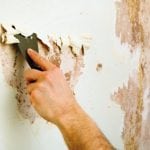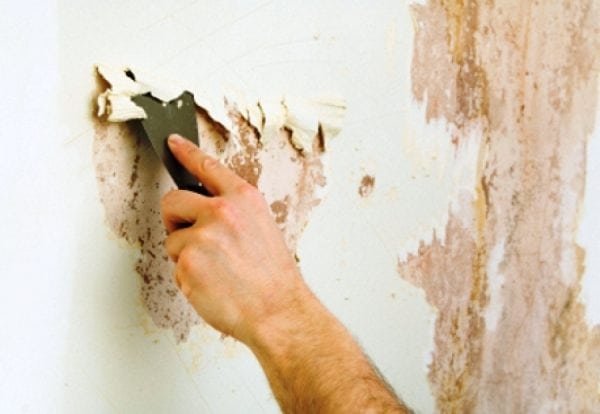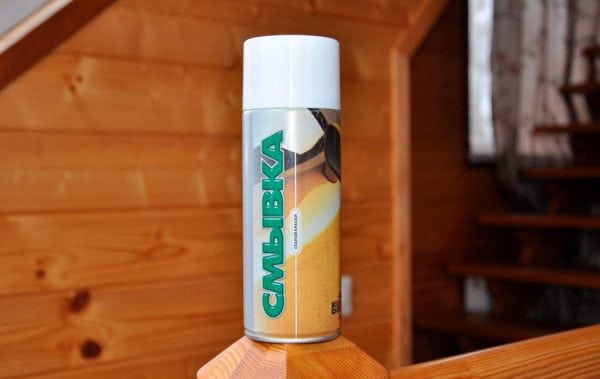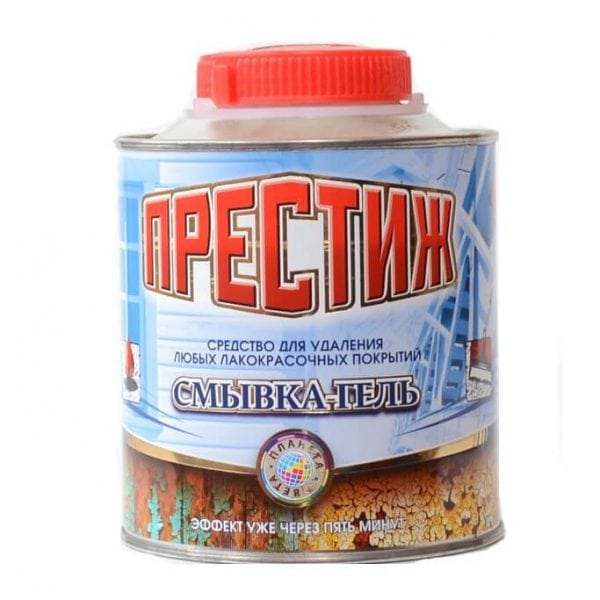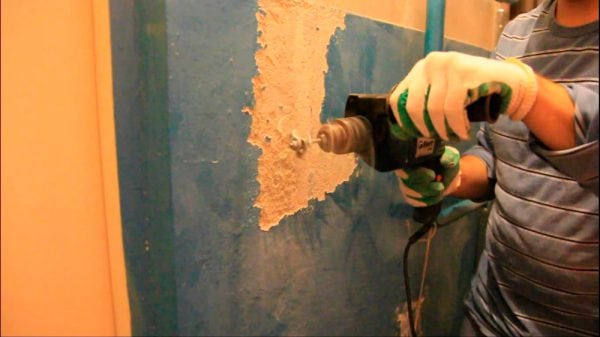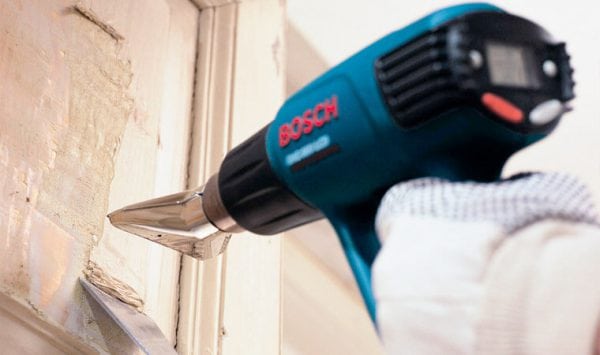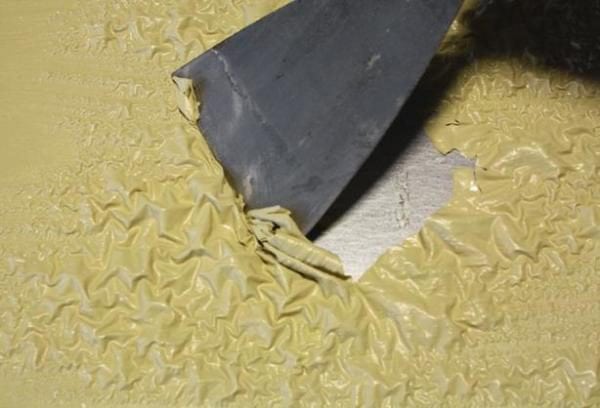Oil painting was very popular in the last century. Now many of the coatings of that time have lost their presentation: old paint is cracking and peeling. Therefore, the question arises of choosing the most appropriate way, how to remove oil paint from the ceilings, from walls and other elements of the interior of the house.
Classification of possible ways
Based on financial capabilities and conditions, the following three methods are most often used:
- Mechanical when the coating scrapes off a painted surface.
- Thermal, when an old paint is exposed to a stream of hot air.
- Chemical, in which various reagents are used, softening and / or dissolving the coating.
The effectiveness of each of these methods is determined by the type of the original surface (wood, concrete, brick, etc.), the composition of oil paint, as well as the appearance of the surface after cleaning.
For example, after mechanical cleaning, the surface will definitely have to be puttied, repairing numerous cracks and scratches. The thermal method will require the use of a powerful building hair dryer or blowtorch. If you decide to clean the surface chemically, you must accurately select the composition of the liquid to be washed.
Each of the methods has its own duration. The mechanical method is the most time-consuming, especially if oil paint is removed from the ceiling or a large part of the wall. It is also unacceptable for wood. The thermal method is considered the most intense, but it is far from possible to clear everything with it (a tree, in particular, is unacceptable). The chemical method also stretches the process of removing the paintwork over time, but least of all interferes with daily business activities.
Mechanical way
Being the most unproductive and dirty (a lot of dust is released during cleaning), the mechanical method has an undeniable advantage - the old coating does not undergo changes in its chemical composition. Therefore, it does not release toxic components into the atmosphere of the house, which is abundant in all oil paints. In addition, the mechanical path is the only one that manages to get rid of oil paint on concrete walls and ceilings.
How can I remove oil paint from walls mechanically? The following tools will be required:
- sharp spatula;
- a chisel (you should not use it on a tree);
- for oil paint applied in several layers, sometimes even an ax is needed.
The process will be greatly simplified if there is a wide range of manual grinding machines in the house. With the existing skills for mechanical removal of oil paint, you can also adapt a drill on which a short chain is mounted (these nozzles are often equipped with mechanized household tools of some companies). To remove oil paint from concrete or brick walls and ceilings, it is also advisable to use perforators with nozzles of a similar purpose.
The ability to soften and wipe the old oil coating from walls, ceilings and other hard-to-reach areas of wood is possessed by some particularly powerful models of household vacuum cleaners. All industrial vacuum cleaners are equipped with such a function by default, however, such an installation will have to be rented.
Using a mechanized tool, you will have to put up with a high noise level, and also periodically adjust the chain mount (the nozzle loses its balance with prolonged use). The grinder is also characterized by high dust emission. This forces you to work with breaks of 15-20 minutes, as well as with the mandatory use of a respirator.
With all mechanical options for removing oil paint from the room, furniture is taken out, and all other property and elements (for example, windows) are sealed with newspapers. The resulting dust should be removed immediately, otherwise it will not be easy to wipe it that has eaten into the surface.
The advantage of the manual method for removing oil paint is that the notches formed by the ax or chisel, along which the former coating will subsequently come off, can then be effectively used for laying ceramic or tile.
The fact is that increasing the surface roughness will help to improve the adhesion of the tile adhesive to the back of the tile. As a result, it will be glued better. Therefore, the mechanical method of removing oil paint from walls and ceilings is most suitable for technical rooms of the house: kitchen, hallway, bathroom, bathroom.
to contents ↑Thermal method
This technique is most often used to remove the old coating from the tree. Previously, blowtorches that were available in almost all households were used for these purposes.
How to remove oil paint from walls and ceilings using surface heating? The calculation is based on the fact that all oil compositions, regardless of the time of coloring, with increasing temperature, worsen their adhesion to the initial surface and melt. Therefore, the technology for applying the method is quite simple - an intense flow of air heated to a high temperature (up to 120-150 ° C) is directed to the selected area. You need to work only with individual sections of walls and ceilings. When the coating begins to bubble, the hair dryer / blowtorch is turned off. Using a spatula, it is easy enough to wipe off the remnants of old oil paint.
The thermal method has its limitations:
- It can not be used on those sections of walls and ceilings where internal wiring passes.
- It is inadmissible to apply heating of surfaces near electrical fittings installed there (junction boxes, sockets).
To achieve the desired effect, it is necessary to clarify the required heating temperature, because otherwise the paint may stick to adjacent areas, and it will be difficult to wipe it off.
It is also worth recalling that when oil paint is softened, some of its components can release toxic substances into the atmosphere. And the use of a blowtorch generally requires well-known skills, because if the heating temperature is exceeded, the tree may catch fire.
to contents ↑Chemical way
This method is the most “quiet”, and it can only be attributed to a drawback as the duration of the action of the liquid components on the coating — sometimes the desired effect is achieved after several hours.
Distinguish between alkaline and organic liquids. The former are more toxic, and when working with them, thorough protection of hands and face skin is required. When using chemical methods to wipe oil paint from the surfaces of ceilings and walls from the premises, it is necessary to remove plants, aquariums, pets. Naturally, it is unacceptable for children to be in the treated room. The room should be well and constantly ventilated, and the temperature in it should not be less than + 15 ° C.
Chemical flushing is the most versatile way. It is often used when other technological methods are powerless. The cleaning technology must fully comply with the manufacturer's instructions.For application, a rigid porous sponge or a clean paint roller is used. After the desired length of time for the wash on the old surface, the loose mass can be wiped off with a spatula or scraper.
It should be remembered that after use, all tools must be thoroughly cleaned of traces of the reagent. This is especially true for steel surfaces.
Starting to clean the surface of the walls or ceiling from old oil paint, it is worth starting with the chemical method. First you need to familiarize yourself with all types of working fluids offered by the distribution network, and choose the one that best meets the specific conditions of future use.

